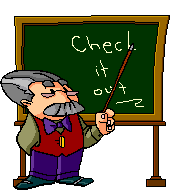
for Teachers & Advanced Learners
Bieber et. al. (2010). Grammar of Spoken and Written
English. England: Pearson Education Ltd.
Phrasal
verbs are used most commonly in fiction and conversation. There are
relatively rare in academic prose.
*Fun
Fact 1: In fiction and conversation, phrasal verbs occur almost 2000 per
million words.
There
are 2 major subcategories of phrasal verbs; intransitive & transitive.
Transitive
Phrasal Verbs
With
transitive phrasal verbs, the direct object can appear between the particle
and the verb.
This
is the normal word order when the object is a pronoun.
Alana turned it on.
Noun (Subject)
|
Verb
|
Pronoun (Direct Object)
|
Preposition (Particle)
|
Alana
|
turned
|
it
|
on
|
I just thought I would point it out to
you.
The warden said that she would turn the heating on.
Transitive
phrasal verbs are more evenly distributed across registers. For instance, verbs
such as make up, put on, and find out are relatively common both
in conversation as well as the written expository register.
Use in
|
Example
|
Conversation
|
You might find out it works.
|
Some people they read the top bit
and the bottom bit, and sort of make
up the bit in the middle.
|
|
Fiction
Writing
|
He put on his business suit and coat.
|
Newspaper
Writing
|
I haven’t been able to put my socks on.
|
Academic
Writing
|
For the modern mathematicians
these numbers would make up the
ordered pair.
|
Intransitive
Phrasal Verbs
In
contrast, intransitive phrasal verbs don’t have any direct object.
Hold on! Take this before you leave.
Noun (Subject)
|
Verb
|
Preposition (Particle)
|
Pronoun (Direct Object)
|
*You
|
Hold
|
on
|
None
|
Oh shut up! You’re so rude.
This kid asked if he could come along.
Come on,
tell me about the new movie, The Hobbits 2.
*Fun
Fact 2: The most common intransitive phrasal verbs are activity verbs.
It
is commonly used as directives and imperatives:
Get
on
|
Look
out
|
Move
in
|
Step
up
|
Sit
down
|
Stand
up
|
Go
off
|
Walk
in
|
Get
out
|
Come
over
|
Go
ahead
|
Come
on
|
*Fun Fact 3: The most common phrasal verb in any register is intransitive come on as used in conversation.
This verb has 3 major functions:
Function
|
Examples
|
|
1
|
Exclamatory extortion to act
|
Come
on, let Sam do it.
I
mean, come on, it’s a bit obvious
|
2
|
Pre-departure summons to move
|
Come
on, let’s go.
Come
on, we better go.
|
3
|
Meaning ‘to start’ or
‘become activated’
|
The
heating didn’t come on this morning.
Has
that just come on?
|

No comments:
Post a Comment